#Telecom
Text

The first mobile phone call was made on this day in 1973. Martin Cooper, using a prototype of the Motorola DynaTAC, placed a call from the streets of New York to Bell Labs in New Jersey. The device was 9 inches tall, had a talk-time of 35 minutes, and took 10 hours to recharge.
2K notes
·
View notes
Text

389 notes
·
View notes
Text

broadcast
#original#wc#weirdcore#weirdcore edit#edit#telecom#oc#ocs#starr + moon#jimmy starr#dallon moon#b1zarr3vel
276 notes
·
View notes
Text
While most telecom networks bury their cables 60cm (about 2ft) underground, PalTel buries its cables up to 8 metres (26ft) deep. In case the Israelis cut off electricity, its data centres in Gaza also have three layers of redundancy: generators, solar panels and batteries.
The company has also developed emergency protocols to direct workers remotely from the occupied West Bank, and if severed communications make this impossible, Gazan staff are empowered to act autonomously.
Despite all the redundancies and preparations, the sheer scale of bombings these past weeks has still crippled the network. About 70 percent of the mobile network has been taken offline. Solar panels have been rendered mostly useless either by being destroyed in attacks or covered in dust and debris.
The relentless nature of the conflict is also weighing on staff, who are dogged by danger from their house to the field.
Rabih*, a fibre optics technician, was called to repair a cable just metres from the border on October 15. Prior to going, he had to give an exhaustive list of the repair team’s names, the colour of their cars and registration numbers to the Israelis, because “a mistake could be deadly”.
As Rabih and his team laboured for two hours to fix the cable, the buzz of a drone above him and the sounds of shelling intermingled with the sound of their excavator.
“Any wrong move could mean being targeted. I cannot explain to my wife and kids why I do that or why I volunteer to go out during the war. My company doesn’t oblige me, but if someone can do it, it has to be me,” he said.
No matter how many metres deep they dig or the number of solar panels they install, Gaza’s connections to the outside world ultimately relies on the Israelis.
The cables that connect Gaza to the outside world run through Israel, and the country on at least two occasions has deliberately cut off the strip’s international communications.
“It’s clear for us that it was cut off by a decision. What proves this is that we didn’t do anything to get it back,” Melhem said.
Israel also controls fuel to Gaza, allowing a small trickle into Gaza on Friday after weeks of pressure from the United States.
Described as a “drop in the bucket” by humanitarian groups, Israel announced that 120,000 litres (31,700 gallons) of fuel would be allowed into the territory every two days for use by hospitals, bakeries and other essential services.
PalTel will also be given 20,000 litres (5,283 gallons) of fuel every two days for its generators.
On Thursday, the company had announced it would go into a full telecoms blackout because its fuel reserves were exhausted for the first time during the current war.
According to Mamoon Fares, the corporate support director at PalTel, the 20,000 litres provided “should be enough to operate a good part of the network”.
However, Gaza’s telecoms network will still be at the mercy of Israel should it decide to cut off fuel deliveries or network services that run through its territory.
Without the ability to communicate, the already dismal situation in Gaza would only further deteriorate.
“No ambulances, no emergency services, no civil defence or humanitarian organisations can work without telecommunications,” Melhem said.
* Names have been changed to protect the individuals’ safety.
29 notes
·
View notes
Text
"The federal government is giving the CRTC new guidelines for regulating telecommunications companies.
It's the first time in 17 years that Ottawa has changed its directions to the arms-length body that oversees telecommunications in Canada.
The previous guidelines issued in 2006 instructed the CRTC to "rely on market forces to the maximum extent feasible," while the new ones place a greater emphasis on regulation.
"That didn't work, and that's gone now, thank goodness," said John Lawford, executive director of the Public Interest Advocacy Centre in Ottawa.
The new directive aims to make it easier for smaller telecom companies to enter the market alongside national providers. This includes cell phone companies that buy access to the national providers' networks and then sell cheaper service to customers.
There are also guidelines about ensuring reliable service in rural areas, remote areas and Indigenous communities.
However, Lawford said he thinks the directive could have gone further in expressing that all Canadians have a "right" to reliable access to telecommunications services, regardless of where they live in the country."
Full article
Tagging: @politicsofcanada
56 notes
·
View notes
Text
A research group has developed a high-speed, high-sensitivity terahertz-wave detector operating at room temperature, paving the way for advancements in the development of next generation 6G/7G technology.
7 notes
·
View notes
Text
VECTOR GRAPHICS - TELECOM
13 notes
·
View notes
Text

Cape
#Cape#privacy-first#mobile carrier#security#5G#4G#telecom#innovation#phone#typography#type#typeface#font#Bradford#FK Grotesk#2024#Week 14#website#web design#inspire#inspiration#happywebdesign
4 notes
·
View notes
Text
Riding the 5G Wave : Transforming Connectivity and Innovating Digital Solutions

In the exhilarating journey of the 5G revolution, there emerges a pivotal player, StartxLabs—a global powerhouse in website and mobile app development. Established in 2014, StartxLabs has been at the forefront of technological innovation, shaping the digital landscape with its commitment to inventing cutting-edge solutions for the web and mobile platforms. As we explore the profound impact of the 5G revolution, let's delve into how StartxLabs is not just riding the wave but propelling it forward with its diverse range of digital services.
1. Speed Beyond Imagination:
StartxLabs, with its expertise in website and mobile app development, understands the critical importance of speed in the digital realm. The 5G revolution aligns seamlessly with StartxLabs' commitment to delivering the finest in class digital services. The unparalleled speeds offered by 5G complement StartxLabs' vision of providing swift and efficient solutions to its clients.
2. Low Latency and Digital Transformation:
Low latency, a hallmark of 5G, is not just about speed; it's about real-time responsiveness. StartxLabs leverages this advantage in its digital transformation services, ensuring that businesses can make split-second decisions and adapt to the dynamic digital landscape. The marriage of 5G and StartxLabs' commitment to digital transformation results in solutions that are not just technologically advanced but also agile and responsive.
3. Technological Solutions:
StartxLabs is more than just a development company; it's a comprehensive technological solutions provider. From Cloud services to DevOps, Digital Transformation to Identity and Access Management, and IT Infrastructure to Virtualization Services, StartxLabs offers a holistic approach to meet the diverse needs of its clients. The 5G revolution serves as a catalyst, enhancing the capabilities of these technological solutions and opening up new possibilities for businesses across the globe.
4. Trusted Partnership:
StartxLabs' journey since 2014 has been marked by its role as a trusted partner to various small, medium, and large organisations. The company's commitment to excellence and innovation has earned it the trust of its clients, making it a go-to partner for digital solutions. As 5G becomes a game-changer in connectivity, StartxLabs continues to be a reliable ally for organisations seeking to harness the full potential of this technological evolution.
Conclusion.
In the era of the 5G revolution, StartxLabs stands as a beacon of innovation and reliability. As we ride the 5G wave, StartxLabs not only embraces the speed and low latency it brings but amplifies its impact through a diverse range of digital services. From transforming businesses through digital solutions to being a trusted partner, StartxLabs exemplifies how technology and connectivity, when harnessed strategically, can propel us into a future where the possibilities are as limitless as the digital landscape itself.
#startxlabs#web app development#mobile app development#django#best mobile app development#ios app development#australian#development#technology#australiandevelopers#information technology#5g#5g technology#5g network#5gconnectivity#telecom#5g smartphone#trendingnow#trending
2 notes
·
View notes
Text
Transform Telecom Field Service Industry
Explore the transformative landscape of the Telecom Field Service Industry. Discover cutting-edge technologies and trends reshaping the sector for enhanced efficiency and superior customer experiences.
2 notes
·
View notes
Text
Para cerrar la semana riendo un pocomucho
Estas eran propagandas papaaa!!!
25 notes
·
View notes
Text

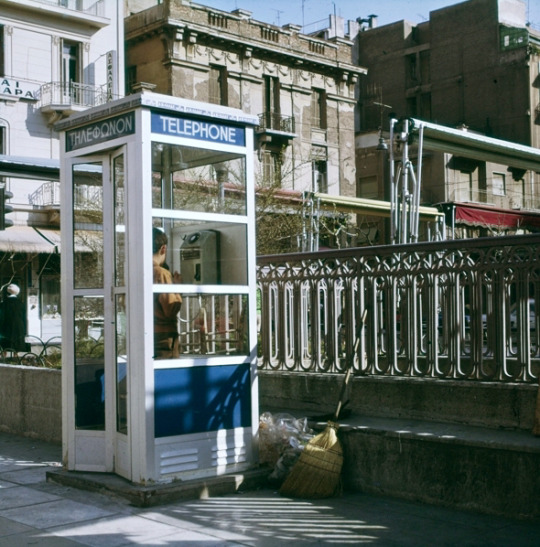
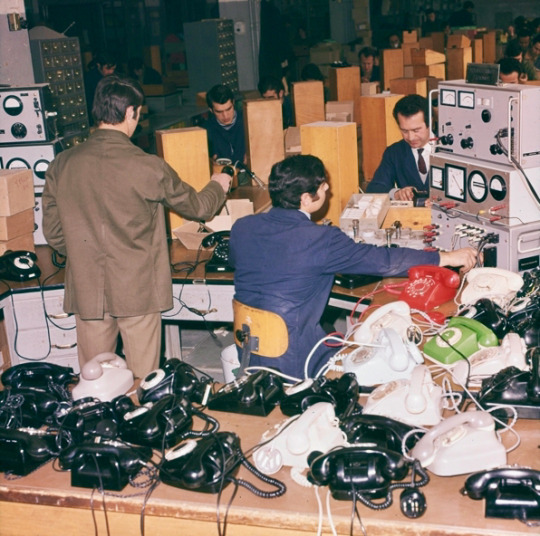





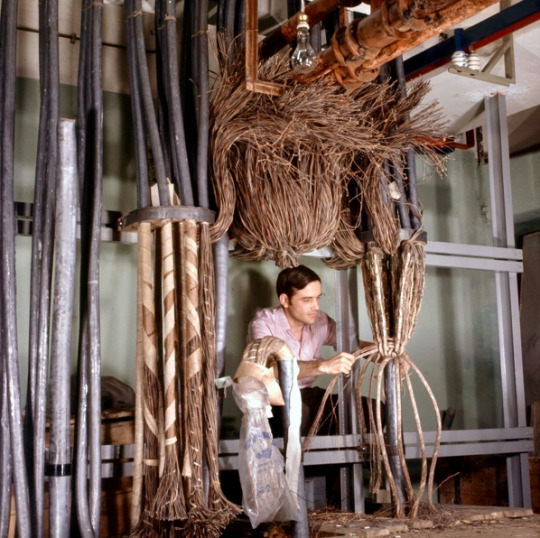
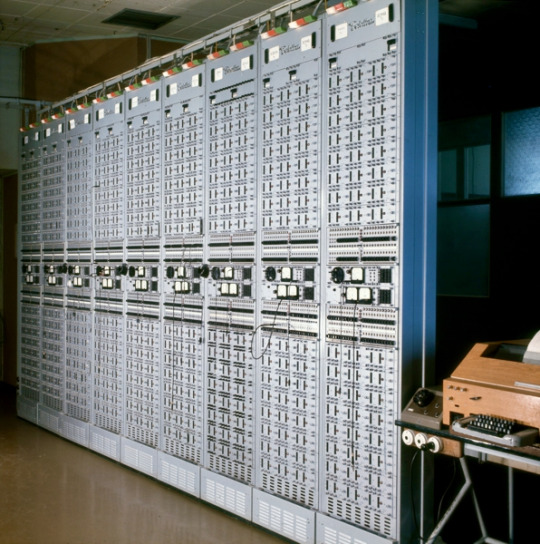
Telecommunications in Greece, 1970-1979.
(OTE Museum of Telecommunications)
1K notes
·
View notes
Text
Why mmWave hasn't become the mainstream spectrum of 5G?
In a previous article of IPLOOK, we introduced what 5G mmWave (5G mmWave) is. Due to its wide bandwidth, abundant resources, and high frequency characteristics, 5G mmWave has significant advantages and was once considered a key frequency band for development in the early stages of 5G. However, today, although many countries and regions around the world have promoted or deployed 5G mmWave, the application of mmWave technology in the industry still faces uncertainties and challenges.
At the beginning of 2023, due to various factors, the construction progress of 5G mmWave base stations in South Korea was far behind expectations, with completion rates only ranging from 10.6% to 12.5%. In Japan, NTT DOCOMO and Rakuten Mobile experienced no growth in mmWave users, and their traffic share was relatively low. Even in the US, which began deploying 5G mmWave ahead of other countries in 2019, the availability of 5G mmWave networks is less than 1%.
Many people believe that the reason why 5G mmWave has not become the mainstream spectrum for 5G is because of its own characteristics and the unclear application demands:
Limited Range: leading to high cost
The mmWave has a small coverage radius, and the construction and operation costs for the same coverage area are high, which hinders large-scale deployment. As a result of its high frequency and large transmission loss, the mmWave has poor coverage ability, with a coverage radius of only about 150 meters for a single mmWave base station, which is only 1/5 of the coverage radius of low-frequency bands such as Sub-6. If a continuous coverage 5G mmWave network is to be built like in the 3.5GHz frequency band, the number of base stations needed would be more than twenty times greater than that of regular 5G base stations, leading to high construction costs.
Poor Penetration: resulting in poor user experience
5G mmWave has poor penetration capability and severe diffuse attenuation, resulting in poor user experience and customer dissatisfaction. There are two main reasons for this. First, the mmWave has a short wavelength (between 1-10 mm), making it poorly penetrating, as it can be blocked by leaves and water droplets. Second, the mmWave is sensitive to the surface of objects, easily causing signal energy to dissipate in multiple directions, resulting in poor signal reception at the receiving end and affecting user experience. For example, even though over 20,000 mmWave base stations have been built in Japan, customers are reluctant to pay for mmWave services due to prominent problems such as frequent signal interruptions and insufficient coverage during usage.
Lack of Groundbreaking Apps
Low-frequency mmWave has clear bandwidth advantages, but due to the lack of groundbreaking applications, its value is difficult to fully unleash in the short term. Globally, mid-to-low frequency spectrum resources are gradually becoming scarce, and more reliance is placed on spectrum re-farming and frequency coordination to solve this issue. In contrast, 5G mmWave, with its continuous and wide spectrum resources, can better achieve bandwidth capacity enhancement. However, by reason of the unclear promotion of large-scale applications such as XR and Smart Homes, and traditional video services can be satisfied with existing bandwidth, the short-term demand for mmWave is not significant.
3 notes
·
View notes
Text
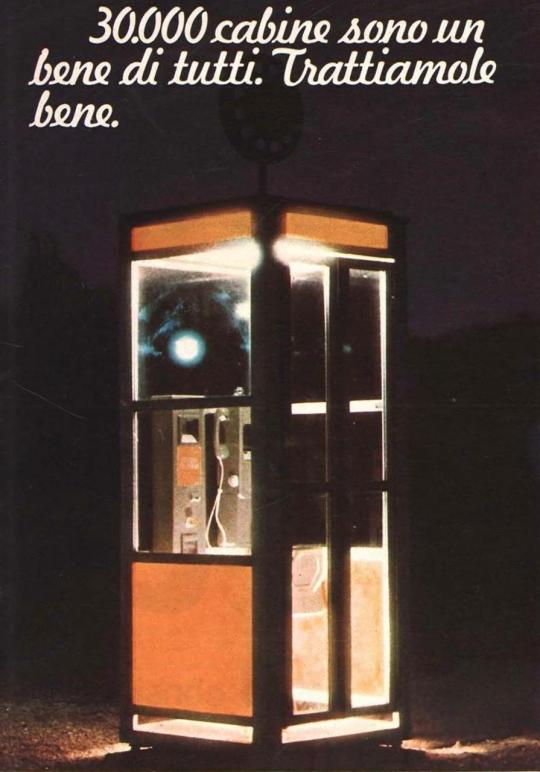
3 notes
·
View notes
Text

a message from telecom
3 notes
·
View notes
Text
"The Competition Tribunal has dismissed an application from Canada's competition watchdog seeking to block Rogers Communications' proposed $26-billion purchase of Shaw Communications, clearing a path for the deal to go through.
It still requires approval from Innovation, Science and Economic Development Canada.
In a summary of its decision released Thursday, the tribunal says the merger of the two telecommunications companies would not result in materially higher prices.
The decision says the deal, which includes the sale of Shaw-owned Freedom Mobile to Quebecor-owned Videotron, would not likely prevent or lessen competition substantially.
Quebecor agreed to buy Freedom Mobile in a $2.85-billion deal earlier this year.
Concerns that Bell and Telus — the closest competitors to Rogers in Canada's telecom market — would be unable to compete with the combined company were also dismissed."
Full article
This is just the latest in many things that have contributed to an oligopoly of telecommunications companies in Canada.
Tagging: @politicsofcanada
#cdnpoli#canada#canadian politics#canadian news#canadian#telecommunications#telecom#rogers#shaw#rogers communications#shaw communications
75 notes
·
View notes